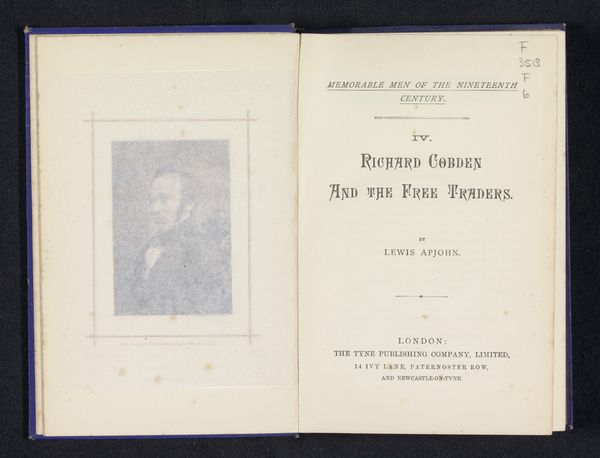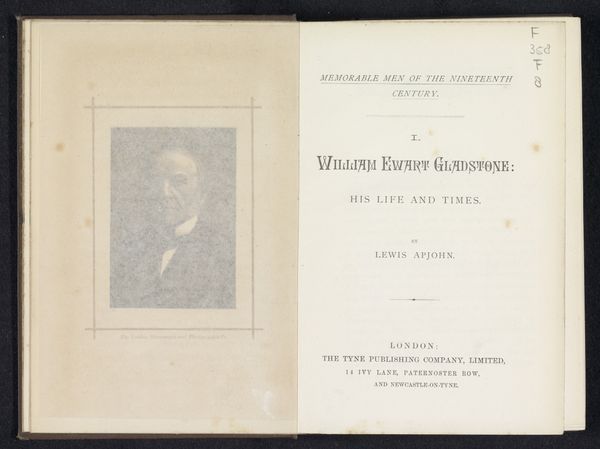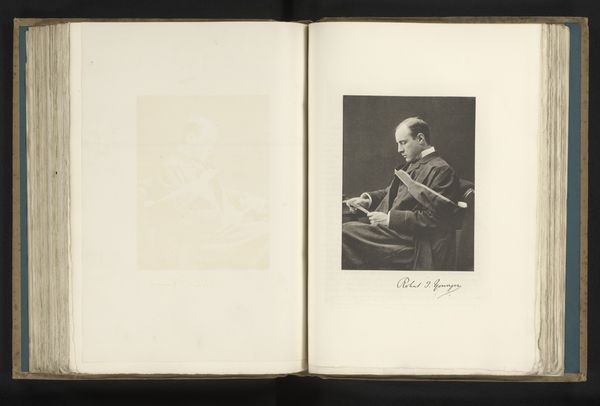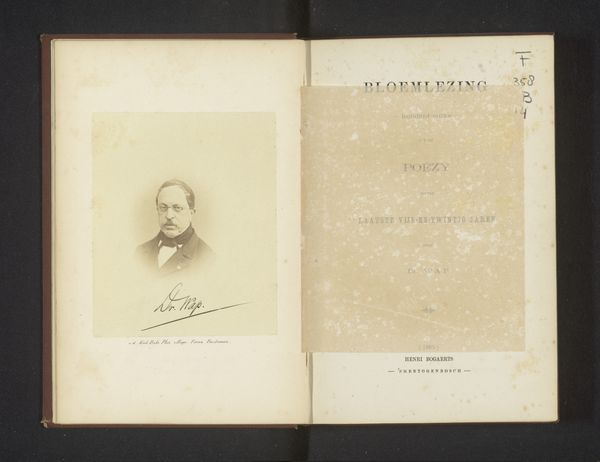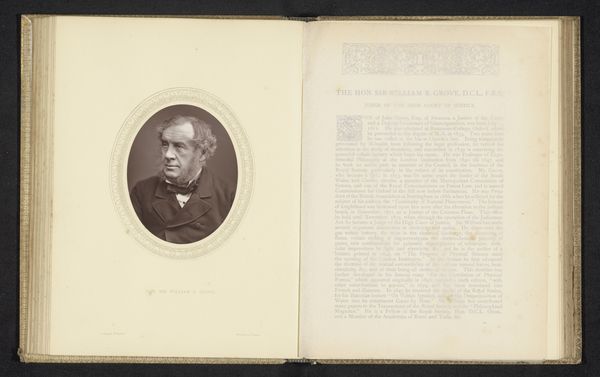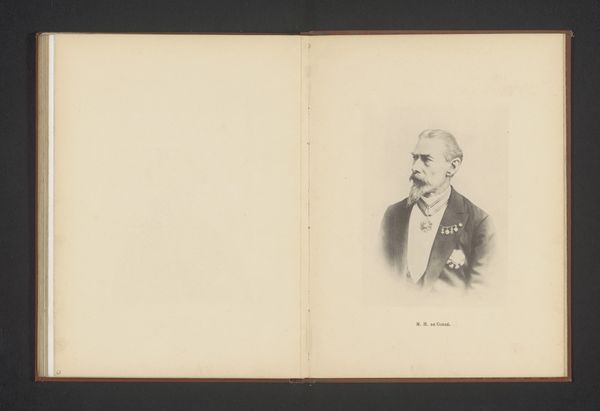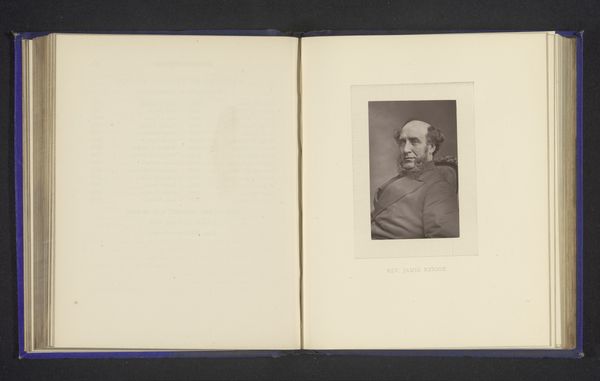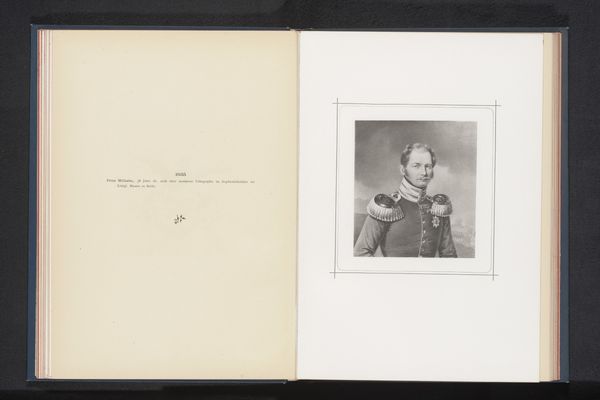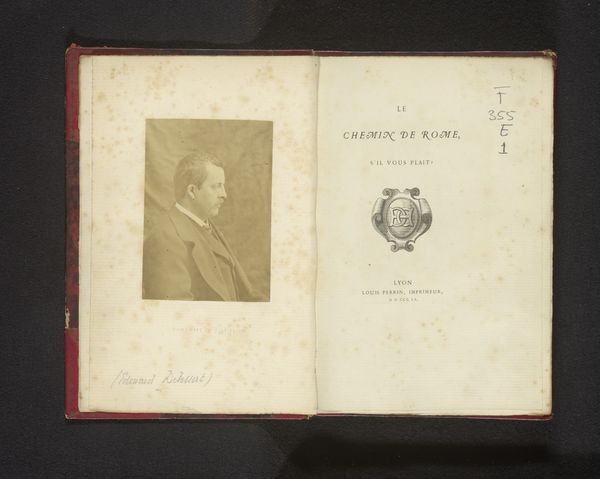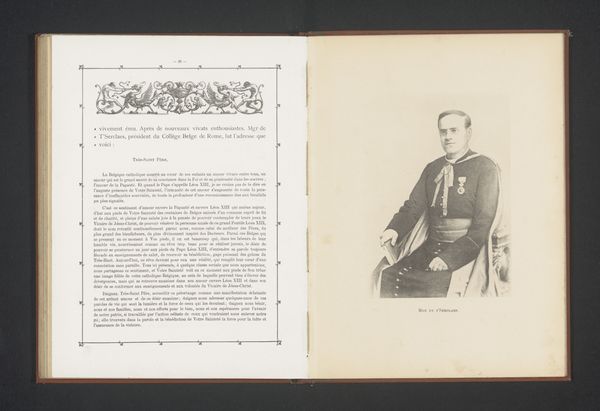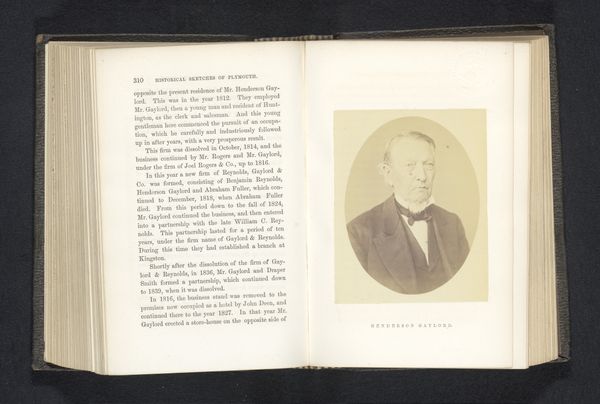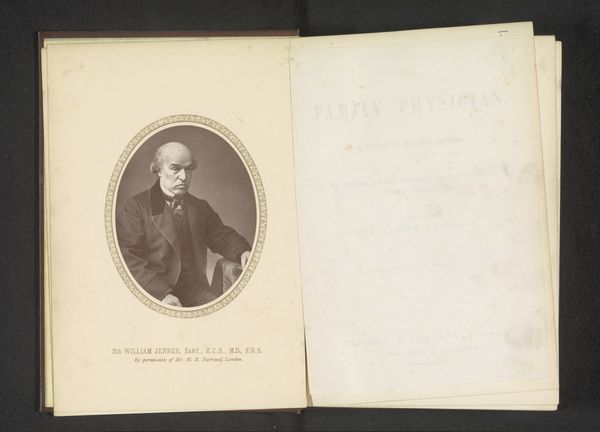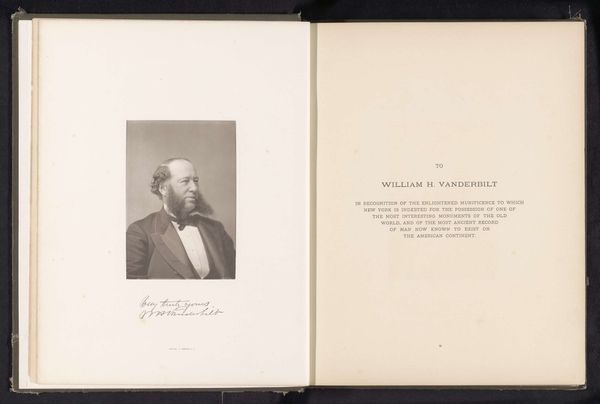
print, photography
#
portrait
#
script typeface
#
aged paper
#
script typography
# print
#
hand drawn type
#
photography
#
hand-drawn typeface
#
fading type
#
stylized text
#
thick font
#
handwritten font
#
thin font
Dimensions: height 82 mm, width 55 mm
Copyright: Rijks Museum: Open Domain
Curator: Here we have a photographic print dating to around 1865. It’s a portrait of Richard Cobden, an English manufacturer, politician, and free trade advocate. Editor: The immediate impact is one of stark formality, a somber reflection captured within a framed rectangle on the left page. The facing page is filled with aged typography. The physical making, the craft, seems important here. Curator: Indeed. Note how the photograph’s tonality guides the eye. The arrangement places Cobden slightly off-center, fostering visual tension between his figure and the text on the right page, setting up a dynamic relationship within the composition. The facing page bears an assortment of typefaces. Editor: And let's not ignore the conditions of labor intrinsic to photography's early forms. Producing prints involved time-intensive darkroom manipulations with materials directly reflecting both industrial practices and aesthetic outcomes in image making. The textures that we observe, I suggest, bear material and historical witness to such production processes. Curator: I agree, and to add, the contrast between the soft gradations in Cobden's portrait and the harder, geometric lettering invites us to contemplate the dual aspects of representation inherent in both image and text. Editor: What intrigues me is the materiality—how this photographic portrait became an item accessible for wider consumption. It prompts consideration of the social currents propelling new approaches to visual dissemination during the 19th century, not just for an elite clientele but also more affordably for the emerging middle classes. Curator: Absolutely. The choice of sepia tones conveys a sense of nostalgia. We are not just viewing a portrait; we're encountering a carefully constructed symbol of Victorian gravitas. Editor: Ultimately, it’s in viewing art in relation to social context, acknowledging production, distribution, and the consumption of images as concrete phenomena that we reveal history, society and art as being indivisible from human endeavors. Curator: Very well said. It's rewarding to look at how these elements synthesize into an artistic gesture representing and shaping its time.
Comments
No comments
Be the first to comment and join the conversation on the ultimate creative platform.
